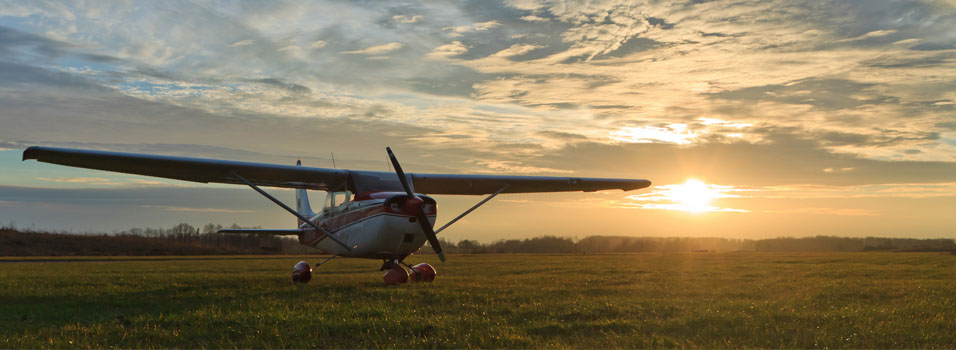One of the reasons why I love to fly is that it allows me incredible freedom of movement. Especially for medium range trips that might take several days worth of driving to complete – a relatively easy day in the cockpit will get me there with time to spare. This has allowed me to attend industry trade shows and business meetings on my own schedule and without the hassle of flying commercial.
In this article, I will discuss the basic legal and practical issues regarding the transportation of guns and ammunition. I am, quite fortunately, not a lawyer, and cannot give you any legal advice (especially advice relating to your local laws), but I can give you a good overview of the major legal issues – primarily because there are not many of them. In addition, I can share with you the practical lessons I have learned while flying with firearms.
Before I begin, I must add another disclaimer: this article is written only for those operating under Part 91. While Part 135 operators are also able to fly with firearms and not deal with the restrictions that major air carriers must impose, there are other issues which are not germane to a discussion of general aviation and firearms. In addition, those flying aircraft with a gross weight over 12,500lbs may be subject to other restrictions which are not covered here.
If you’re not a pilot, you might still find this article relevant – chances are you might know someone who is a pilot, and you might want to talk with them about flying somewhere to shoot. You might be surprised at how that far-away, but really interesting, shooting range or hunting spot isn’t that far away by aircraft.
Here’s a quick video overview of the legal and practical issues, but the most detail can be found in the article:
Legal Issues
Concealed Carry and Firearm Possession
First, it’s important that you know the local laws for both your departure and destination airports, as well as those for any alternates you may select. Those who live in “gun-friendly” states may not consider some of the odd restrictions which other states have in place. Furthermore, if you’re carrying a concealed weapon, you should ensure that your state’s concealed weapons permit is recognized by the state you to which you are traveling. This interactive map from USACarry should help on that front. These things might sound obvious, but in the course of the intense planning that a cross-country flight requires, it’s easy to forget the little things.
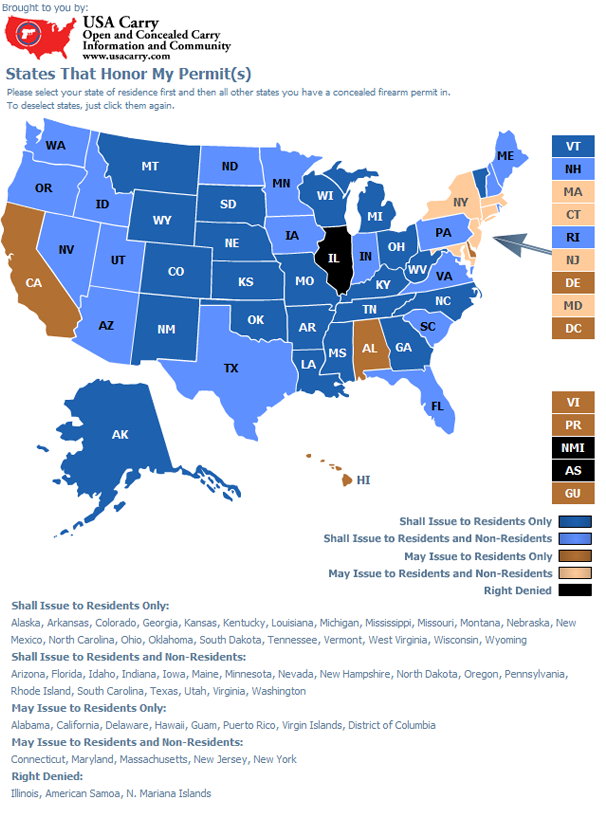
You should be aware that you are not prohibited from traveling with firearms in your personal airplane under federal law and federal aviation regulations (FARs). In addition, you are afforded specific protections when traveling with firearms in any vehicle – as long as you comply with storage requirements. In fact, when I spoke with Lt. Tim Taylor of the Tucson Airport Authority, he said that under the law, your airplane is the same as any other motor vehicle – such as a car.
18 USC § 926A states the following:
Notwithstanding any other provision of any law or any rule or regulation of a State or any political subdivision thereof, any person who is not otherwise prohibited by this chapter from transporting, shipping, or receiving a firearm shall be entitled to transport a firearm for any lawful purpose from any place where he may lawfully possess and carry such firearm to any other place where he may lawfully possess and carry such firearm if, during such transportation the firearm is unloaded, and neither the firearm nor any ammunition being transported is readily accessible or is directly accessible from the passenger compartment of such transporting vehicle: Provided, That in the case of a vehicle without a compartment separate from the driver’s compartment the firearm or ammunition shall be contained in a locked container other than the glove compartment or console.
In other words, you’re allowed to travel from one state where your guns are legal to another state where your guns are legal. However, there are a few exceptions you should know about.
Diverting to an Alternate…State
If you’ve been flying for very long, you’ve no doubt encountered a situation – weather, mechanical problems, passenger issues – that required you to divert from your intended destination or en-route fuel stop. On very long trips, this might involve different states than you intended to visit, and certain states have an overzealous approach regarding firearms laws.

Greg Revell was arrested and jailed for five days in New Jersey after he was stranded overnight by a delayed commercial flight and had to check his bags, including a firearm, with the airline again the next day. This does not directly relate to general aviation, but it is easy to see how a diverted GA flight could land you in hot water.
Mr. Revell ended up suing the NY/NJ Port Authority, and his case is currently headed for the Supreme Court. This case should serve as a warning to others – if at all possible, avoid inadvertent travel to locations where your firearms are not welcome.
Of course, if your safest and/or best choice is to land at such a place, you should take that route. The oft-used phrase “better to be tried by twelve than carried by six” takes on a unique new meaning when used in the context of aviation decision making.
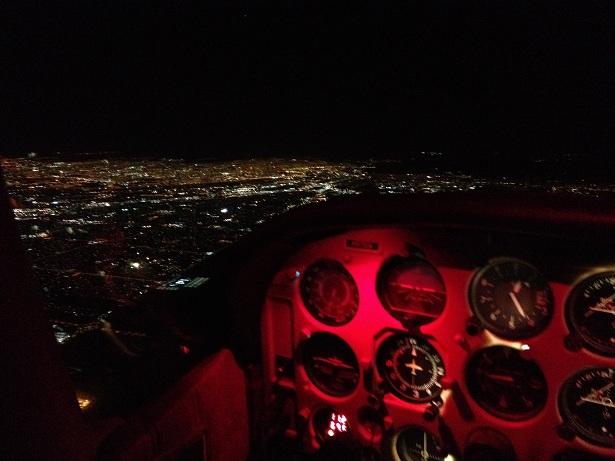
One factor of GA is that it affords you a certain degree of independence which commercial flights do not; should you find yourself forced to land in a location where your firearms are not allowed, it may be best to not bring this fact to the attention of local law enforcement, and instead depart the area as soon as possible.
Staying Out of Restricted Areas at Controlled Airports
As you may know, it’s not allowed (under numerous laws, such as this one) for most people to possess a firearm inside the controlled area of an airport – the areas between security screening and the commercial aircraft, as well as the portion of the airport reserved for commercial aircraft operations (such as the passenger terminals). While it’s highly unlikely that any tower or ground instructions would include taxiing inside the secure area reserved for commercial aircraft operations, you should be aware that you might not be able to accept taxi instructions to certain parts of controlled airports.
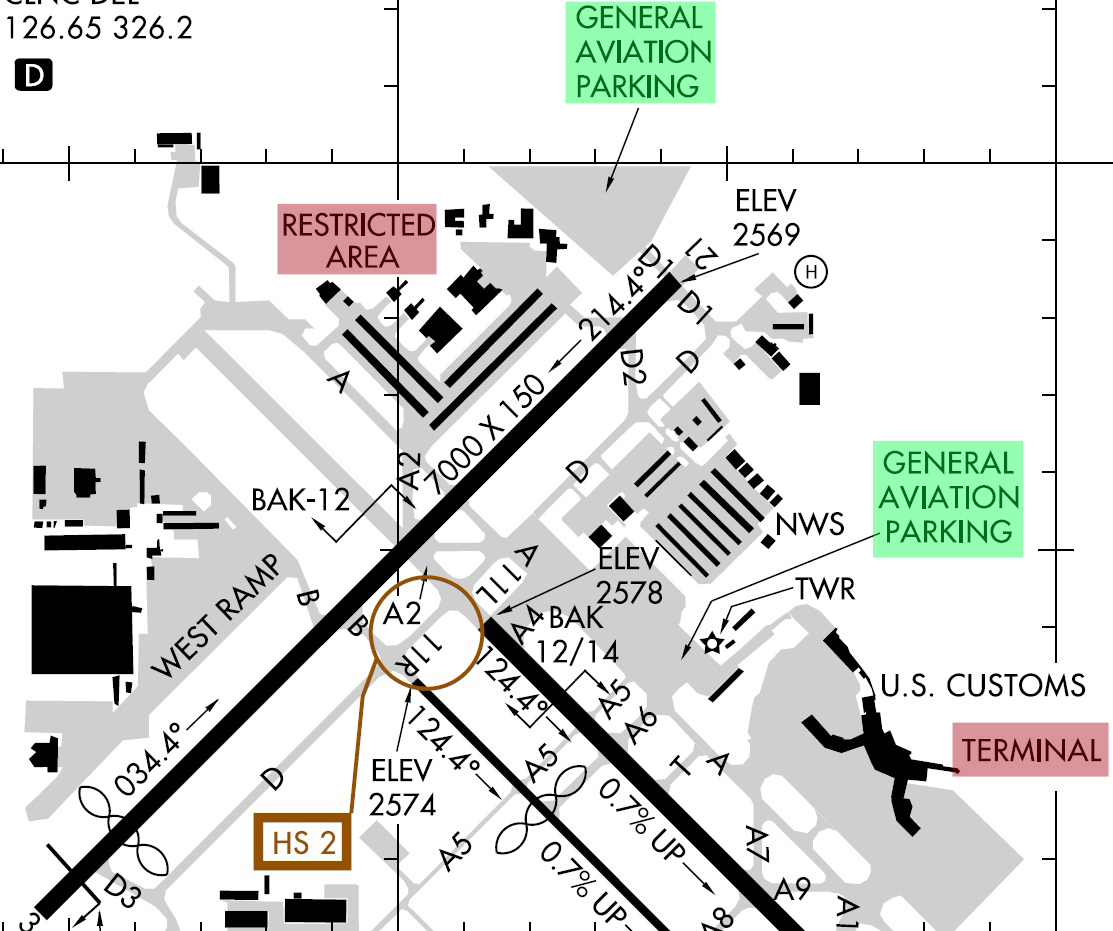
Lt. Taylor informed me that not only is the tower not going to instruct a general aviation aircraft to taxi into the area restricted for commercial aircraft only, but that there are signs directing GA pilots to the appropriate portion of the airport. Should the pilot of a general aviation aircraft inadvertently taxi into the restricted area, it would most likely be intercepted by police – and as it would technically be a violation of the law, the pilot could face serious consequences.
You may have also noticed that the federal statute above discusses keeping the firearm secured from your reach while traveling. This would seem to preclude concealed carry, but the opening sentence essentially allows the states to determine how you may carry – therefore, if you may legally carry concealed at your departure and destination airports, you are not required to remove your handgun from your person during flight.
In addition, if you must secure the firearm for transport according to state or local law, there is a provision in the federal law which states that a locked container is sufficient for this purpose. Therefore, aircraft with baggage compartments accessible during flight are still “legal” for the purpose of transporting firearms, if you lock the firearms in a container during flight. If you’d like to read more on the legal issues from a lawyer, this is an excellent article. However, as you’ll see in the next section, there are many practical considerations which you must consider.
Practical Issues
Weight and Balance
If you’ve determined that you are legal to fly with firearms, you may think that there’s nothing else to worry about – but there are several more factors to consider. Firearms and ammunition are fairly unique in their weight and dimensions.
Pilots are taught the importance of weight and balance when they’re learning to fly, but it’s a topic that can be easily forgotten about, and the fact remains that firearms and ammunition can be very heavy. If I’m traveling on business, I may only have one handgun and a small amount of ammunition. If I am flying to a planned shoot, I may have several rifles and a large amount of ammunition.

I mostly fly solo, but if another person is along for the ride, their baggage, as well as their firearms and ammunition, may push the weight of the aircraft close to or over its max gross weight, or move the CG of the aircraft to an unacceptable point. If this is the case for you, it might be a good idea to order ammunition online and have it shipped to your destination.

Secure That Load
Another weight consideration is that if you encounter turbulent air, are forced to make immediate changes to your course, or have a hard landing, unsecured objects in your aircraft may become missiles. The density of ammunition and the containers in which ammo is normally found could result in disorientation or unconsciousness if you were struck in the head by a flying box or case of ammo, which might have eventually fatal results. Stranger things have definitely happened in the course of aviation history.

For this reason, I secure larger amounts of ammunition in soft-sided bags and attempt to keep these bags away from the passenger compartment. The baggage compartment is the best place for this, but its aft location in the Cessna singles I normally fly, as well as its maximum weight allowance, restricts me from putting a huge amount of ammunition there. Similarly, if you’re flying a twin which has baggage compartments in the wings, be sure to distribute weight evenly from side to side. If you have cargo netting, be sure to use it – if you don’t have cargo netting or some other way to tie down this stuff, find some.
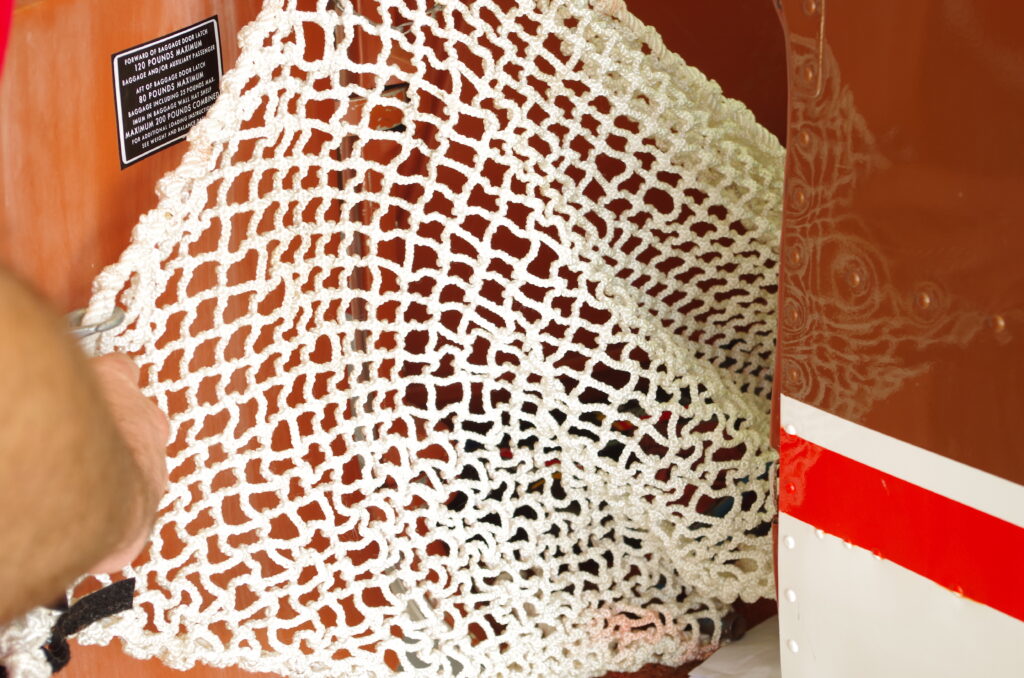
If you’re flying a float-equipped aircraft, you have access to storage compartments in the floats – but water often finds its way into these compartments. If you have to keep firearms or ammunition there, sealing them inside a waterproof bag is an excellent idea. In addition, consider keeping ammunition in containers which won’t serve to contain pressure in the event of a fire. Ammunition by itself isn’t especially dangerous in the event of a fire – it’s most dangerous when inside the barrel of a gun, where the pressure is directed towards propelling the bullet to a high velocity – but inside a small metal container, this pressure can in fact be dangerous.
As far as the firearms themselves go, handguns are easy to store in a lot of bags and containers. Rifles and shotguns, on the other hand, can be quite long and awkward to store, especially in the cramped quarters of a Cessna 172. Those flying cabin-class aircraft will not face much of an issue, however, although thought should still be given to securing a long and heavy object inside the cabin.
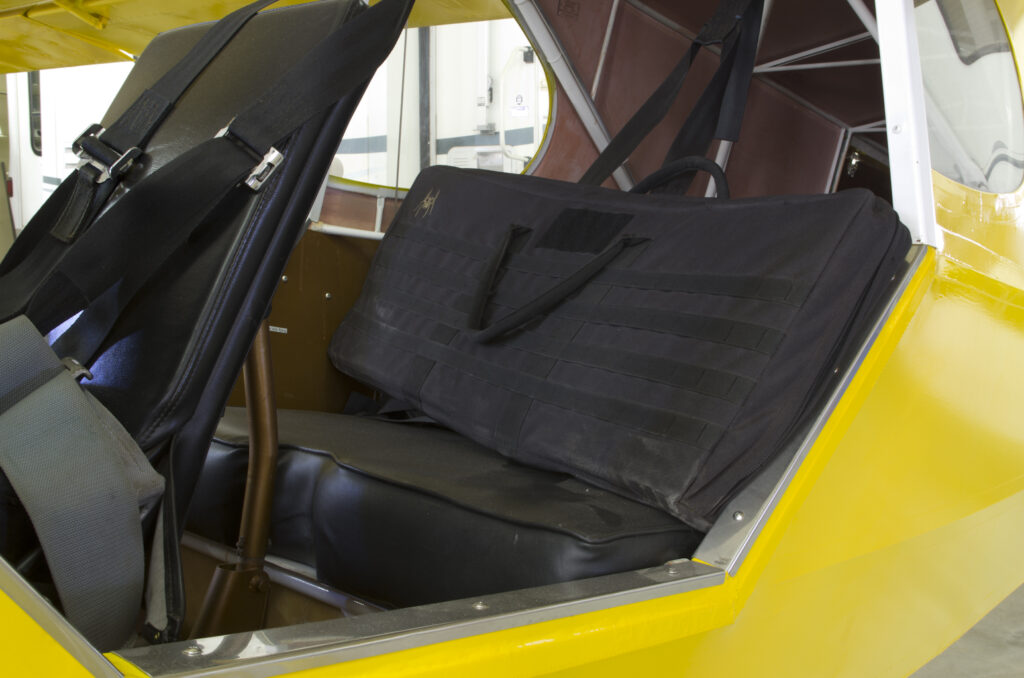
If you’re unsure of your passengers’ intentions, you may wish to take the route of John at Aviation Mentor, who said, “If I had a passenger who wanted to carry a firearm on a flight, the only way I’d allow it would be for the firearm to be unloaded, with a trigger lock, and for the ammunition to be stored in its original packaging inside a second locked container. I’d want both the firearm and the ammunition to be secured in the baggage area such that it was not accessible in flight. And I’d want to personally be possession of the keys for the duration of the flight.”
Break It Down
Because of the size of many firearms, I prefer firearms that may be easily taken down and stored in smaller bags or containers. AR-15 rifles are excellent for this purpose, but it’s not impossible to break down other weapons. That said, bolt action rifles often pose a problem in this regard.
The Remington 700 is a favorite of mine for long-range shooting matches, but in stock form it is very difficult to disassemble and render shorter in the field. As with most things, money provides a solution: there are numerous bolt action rifles which may be taken down easily. However, few of them could be considered cheap. If you’re looking for such a rifle on a budget, the new TC Dimension is an affordable option.
Once I have packed my firearms and ammunition in the appropriate containers and stored them in the right location in the aircraft, I always secure them – with cargo netting if they’re in a baggage compartment, or bungie cords if they’re in the cabin. It’s not likely that I will need them in flight, but I will need them to stay where I put them. Why have I mentioned this twice? Because I once had to deal with an in-flight load shift – and I never want to do that again.
In some areas – such as Alaska – external storage tubes are attached to the struts of bush planes, and rifles or shotguns may be stored inside. For very small aircraft such as Cubs, this may be the only option. However, you may not wish to advertise that you’re carrying a gun – in the Alaskan bush it is the same as carrying an extra pair of socks, but in West Palm Beach it might not be socially acceptable to show off your “hardware” in this manner. Some airplanes such as one of the Cessna 180s pictured in this article have modifications to the baggage compartment which allow long objects like fishing poles or rifles/shotguns to be stowed there.

When I fly over remote areas, I bring a survival kit, which includes a number of things, including a firearm and ammunition. The most useful ammo (along with the appropriate firearms, of course) for this, in my opinion, consists of .22LR high velocity loads and 12 Gauge slugs, although a number of centerfire rifle cartridges would also fit the bill. I package these items along with the rest of the survival kit components, including first aid gear, food, water purification equipment, and so on, all of which I keep in a dry sack.
Another thing I consider vital for a survival kit is communications gear and other equipment designed to help others find me in the case of an emergency. I learned how difficult it can be to locate a downed aircraft with only an old 121.5 ELT while participating in search and rescue exercises and missions as a cadet in the Civil Air Patrol while I was growing up in Alaska. Because of this, I fly with devices such as a SPOT satellite messenger and an Inmarsat satellite phone.
When you’re done flying, don’t forget to close your flight plan – and grab your guns! You wouldn’t want to forget them, especially if you rent or belong to a flying club. The next pilot might be alarmed at the sight of a Glock in the map pocket – or they might not notice until they fly to a locality where it would be illegal, thus unfairly putting them at risk of arrest and prosecution.
Fly Smart
We’ve created this checklist to help you prepare for flying with firearms and ammunition. The basic principles are:
Legal
- Ensure that all firearms, ammunition, magazine capacities, and carry/storage methods are legal at departure, destination, en-route stop, and alternate airports (state and local laws)
- Do not taxi into the area of an airport reserved for commercial aircraft operations, or carry firearms into/near this area
Practical
- Perform weight and balance calculation to determine if amount of firearms/ammunition carried would render the aircraft unsafe to fly
- Secure firearms and ammunition in cases/containers and tie them down to prevent them from becoming missiles in flight
- Keep firearm/ammunition cases from interfering with flight controls or passengers/pilots
Post-Flight
- Remove firearms and ammunition from aircraft if necessary/desired
Summary
However you choose to transport firearms in your personal aircraft, remember that you’re the pilot-in-command – you make the decisions and you’re responsible for the consequences of those decisions. Research the applicable local and state laws, properly load your airplane, and fly safe.
We would like to thank the folks at General Aviation News, Cockpit Conversation, and Aviation Mentor, for their assistance by providing input on an early version of this post.
If you’re a pilot and you’ve flown with firearms in your GA aircraft, or if you’ve flown with firearms as a passenger, we’d love to hear from you. Please feel free to share your stories in the comments section below
